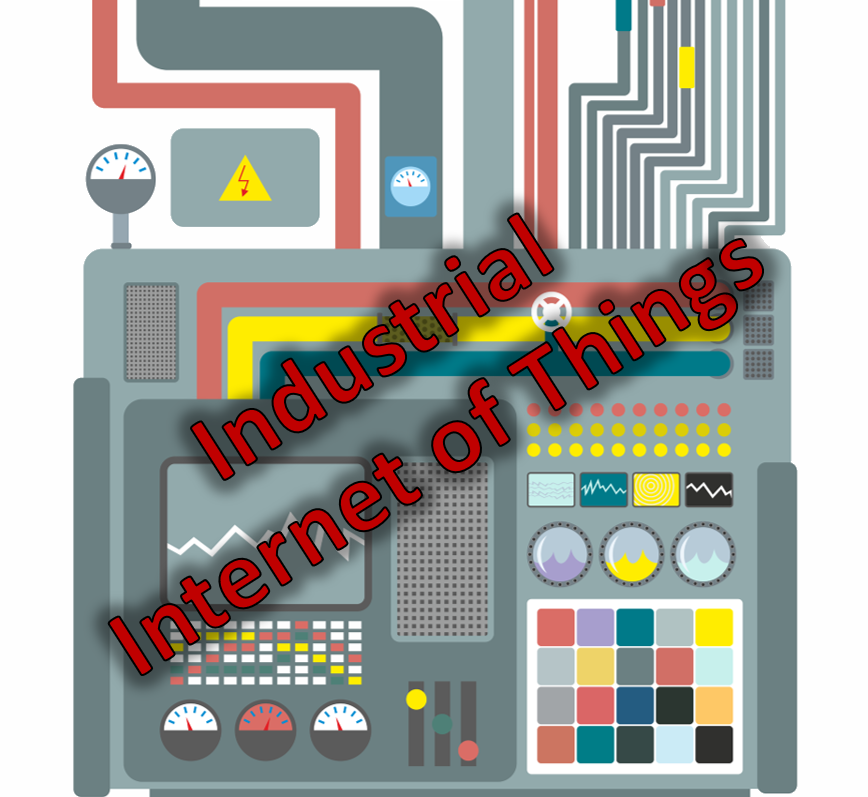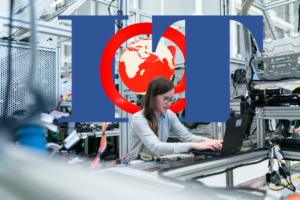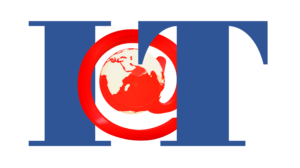When the Internet of Things (IoT) was first imagined, the vision was a vast network of connected machines benefiting the industrial sector. It didn’t take long, however, for businesses to realize there were consumer uses for IoT devices as well. Most people are now familiar with connected security systems, monitored doorbells, and the like. To distinguish consumer- and industrial-related IoT applications, some analysts divide discussions into IoT and Industrial IoT (IIoT) categories. For example, Hailey Lynne McKeefry (@HaileyMcK) writes, “The Internet of Things has long had consumers excited as they consider how their refrigerator might send messages to the grocery store or explore the wide variety of wearable devices available to them. The real promise of IoT, though, can be seen in the industrial realm — and those are the applications that are coming to the fore.”[1] She adds, “It’s been slowly growing in the background for a long while. In fact, the seeds were planted as much as five decades ago. (Take a look at the IIoT timeline from Kepware to get some details.) At the same time, we haven’t come near to reaching the promise.”
Industry 4.0 and the IIoT
Many analysts believe the Digital Age has spawned a new industrial revolution — often called Industry 4.0. Staff members at CIO Review explain the IIoT is but one of several technologies that has helped usher in Industry 4.0. They write, “Data has become the new oil as almost all business functions rely on data to improve their operational efficiency. The Industry 4.0 trend requires manufacturing companies to adopt innovation automation and data exchange solutions like the Internet of Things, cloud computing, cognitive computing, artificial intelligence, and many other intelligent technologies.”[2] They go on to note, “[The IIoT] has allowed companies to collect reliable, safe, and real-time data for analysis, which allows companies to reduce the consumption of resources, creating more efficient business processes to improve productivity and growth. Many industries like manufacturing, agriculture, and logistics have been relying on industrial IoT to optimize their applications by connecting machines and devices. These industries which were earlier marred with inefficiencies, bottlenecks or excessive consumption, have taken a sigh of relief with the emergence of IIoT.”
The terms “Internet of Things” and “Industrial Internet of Things” are often used as shorthand for a broader ecosystem consisting of monitored devices or sensors on one end and analytic platforms on the other end connected by the IoT. For example, Sean Riley (@1seanriley), Director of the Manufacturing Practice at Software AG, writes, “The Industrial Internet of Things has almost infinite potential but potential is always grounded by a tangible ROI. In addition to the obvious cost savings and productivity gains, IIoT can be leveraged for developing more innovative products and services more efficiently. For instance, with IIoT, a manufacturing organization can optimize machine reliability and production, improve product quality, reduce wait times for quality checks, launch connected products and drive usage-based business models.”[3] Clearly, connectivity alone cannot accomplish all those things; the IIoT ecosystem is required. Michael Risse, CMO and Vice President at Seeq Corporation, explains, “The next stage by any name — Industry 4.0, IIoT or Digital Transformation — will be enabled by the proliferation of cost-effective wireless sensors, wireless communication networks and flexible data storage in the cloud. … The adoption of advanced analytics software will be necessary to unearth key insights from the mountains of process data being generated by these technologies.”[4]
Benefits of leveraging an IIoT ecosystem
IIoT ecosystems can benefit both internal processes and external relationships. The CIO Review staff points out ways the IIoT ecosystem can help companies. They are:
1. Inventory management. IIoT ecosystems can use sensors to track inventory through the supply chain, enable intelligent warehouses, and monitor the condition of products —everything from temperature to humidity to energy consumption — along the way.
2. Manufacturing. Manufacturers can benefit from IIoT ecosystems by monitoring equipment, detecting disruptions, and making processes more efficient.
3. Logistics management. Supply chains can optimize logistics functions with the help of IIoT ecosystems. Embedded vehicle sensors can provide GPS locations, cargo volumes, downtimes, delivery times, and package locations. The CIO Review staff also notes, “Companies can integrate logistics data with warehouse data to make efficient logistics management.”
4. Asset management. IIoT ecosystems can provide equipment status and predictive analytics to help with preventive maintenance. The CIO Review staff notes, “Predictive maintenance tools use sound, vibration and many other factors provided by IoT devices to determine the health of a machine.”
Risse asserts, “IIoT has the potential to transform manufacturing’s traditional linear supply chains into vibrant, interconnected systems — digital supply networks — that can more readily interact with ecosystem partners.” Paul Miller (@PaulMiller), a Senior analyst at Forrester Research, stresses, “Industrial IoT software platforms do more than just connect things. … Today, analytics, machine learning, and even some nascent use of artificial intelligence are more common and allow industrial firms to move on from simply monitoring the state of their connected machinery.”[5] He goes on to note IIoT-related technologies can be used to create a digital twin that will help decision makers plan more effectively. “Done right,” he writes, “the digital twin will lie at the heart of digitized industrial processes. On the less mature end, this might only be a graphical representation of the real world. But more mature solutions offer a data-driven bridge between the physical and the digital, reflecting real-world operating conditions and simulating possible future states.”
Concluding thoughts
In order to be their best, businesses need to focus on people, processes, and technology. Too many discussions about IIoT focus strictly on the technology and processes. Derek Chin, Director of innovation strategy at Nerdery, observes, “IoT has the potential to transform how manufacturers operate and gain unprecedented competitive advantages in the market. But to capture these values, companies must commit to doing more than buying the latest technologies. With implementation strategies for both the technology and the humanity inherent in IoT, businesses can make the most out of their investments and confidently enter the era of Industry 4.0. … To be successful, IoT solutions need to both provide value to the organization and value to the frontline employees who will be using it every day.”[6] Although the consumer side of the IoT gets a lot of media attention, the industrial side of the IoT is will continue to have the greatest impact.
Footnotes
[1] Hailey Lynne McKeefry, “Real-World Industrial IoT Finally Takes Shape,” EBN, 24 February 2017.
[2] Staff, “Improving Industrial Operations with IoT,” CIO Review, 3 September 2019.
[3] Sean Riley, “To Fully Realize Its Benefits, IIoT Cannot Be Conducted in a Vacuum,” Manufacturing.net, 5 February 2019.
[4] Michael Risse, “The IIoT Opportunity: Accelerating Insights with Advanced Analytics,” Automation.com, 20 August 2019.
[5] Paul Miller, “Industrial IoT software platforms do more than just connect things,” Information Management, 15 August 2018.
[6] Derek Chin, “Making the Most of Your IIoT Transformation,” IndustryWeek, 17 January 2019.





